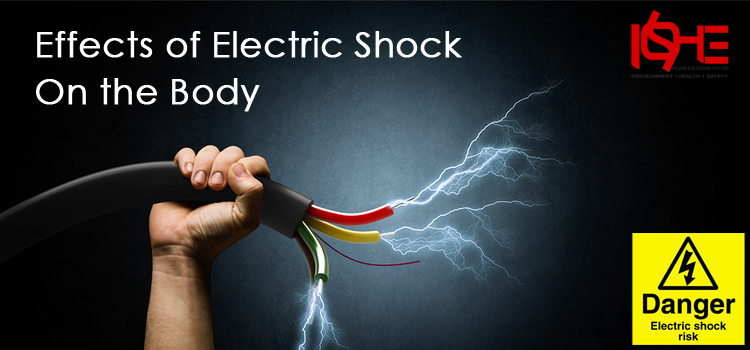Effects of Electric Shock on the Body
Electricity can cause injury to people in two ways, by electric shock or burns. The effects of electric current passing through any part of the body can range from a tingling sensation to a severe jolt to a complete muscular contraction, respiratory failure and death.
Hazards associated with Electricity: BSAFE B – Burns S – Shocks A – Arcing F – Fire E – Explosions
Electricity can cause injury to people in two ways, by electric shock or burns.
The effects of electric current passing through any part of the body can range from a tingling sensation to a severe jolt to a complete muscular contraction, respiratory failure and death.
Most electric shocks results from a persons touching a live conductor with one part of the body and touching earth with another part of the body. For example, a person touching a live terminal in a fuse box whilst standing on a wet floor receives a shock. This is due to the fact that most electrical supply systems are deliberately connected to earth at some point and by touching one live terminal the main automatically completes the circuit through their body and feet back to the supply system, through the earth. It is possible of course to get a shock by touching two terminals in an electric circuit.
To understand how electricity can cause injury it is necessary to explain that in order to function, the body needs a certain amount of electricity. The muscles are controlled by a small current, in the order of four micro amps, acting on the central nervous system.
In order to grasp, a signal is sent down to the nervous system, which causes an increase of current in the muscles. An increase to about 4 mA causes the muscles to contract.
The firmness of the grasp of the hand, for instance, will depend upon the strength of the contraction of the muscles which is in turn dependant upon the amount of current caused to flow through them.
When releasing the grasp the current is first switched off. The hand at this time still in the grasping position but is now relaxed. A similar signal is then sent down the nervous system to cause a current increase in the release muscles. The release current then causes these muscles to contract and thus open out the hand.
It is important to appreciate that the release muscles are not as strong as the grasping muscles.
The following table shows the relative magnitude and effects of electric currents on the human body. The table shows a range of values for alternating current in milli amps at 50 Hertz with the corresponding sensation. The actual values varies from person to person, from men to women, and from adult to child.
For example the average perception level for men is approximately 1 milli amp, but for women a lower value of 0.7 mA. This is the value of current flowing when a tingling sensation can first be felt. The average let-go value for men is in the order of 10 milli amps whilst the average let-go value for women is slightly lower in the order of 8 mA.
| Sensation | 2 |
| Max. Safe Current | 2 – 5 |
| Threshold of feeling | < 10 |
| Safe ‘Let go’ Current | 10 – 15* |
| Muscular Contraction | 20 – 40* |
| Arrest Respiration | 50 – 200* |
Ventricular Fibrillation Death could be caused by any of the above current values denoted by * .
Ventricular fibrillation is nearly always critical and develops when an electricity moving through Chest affects the heart. The heart muscle tissue are thrown out of synchronisation, regular pumping motion stops and the heart flutters for a short while and does not pump blood.
The blood flow circulation ceases and the body cells will be declined the fresh air supply which is by the blood stream. In such a case artificial breathing will do no good since all that is occurring is that the air is being inhaled and exhaled by the lungs without the oxygen being produced and circulated
